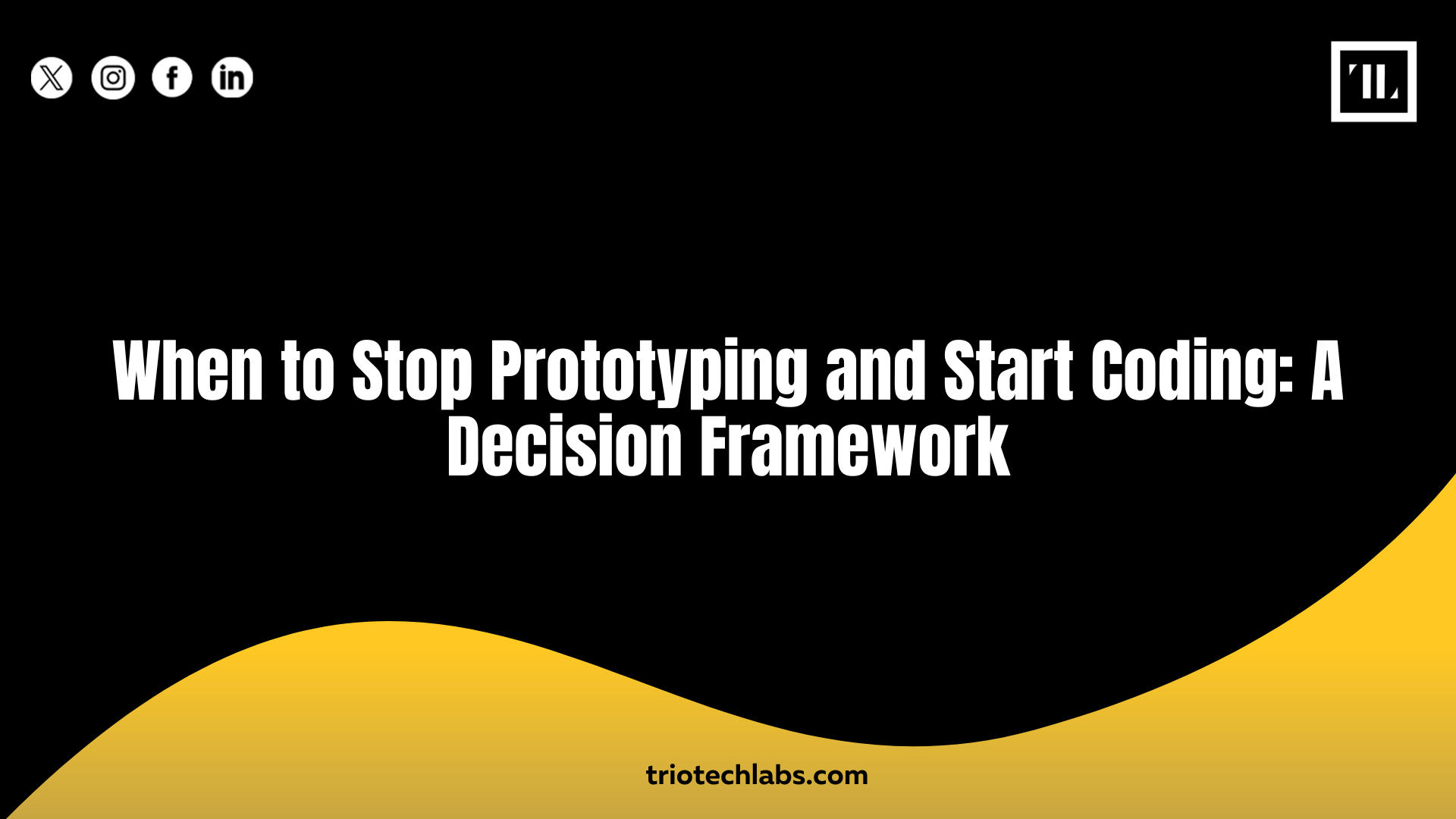
Prototyping is essential in modern product development, but it can become a trap. Teams often fall into cycles of endless iteration, delaying real progress. Knowing when to transition from exploring to building is critical to avoiding missed deadlines and bloated budgets.
The goal of prototyping is clarity. Once you know what to build, continuing to prototype becomes wasteful. This article introduces a practical decision framework that helps teams at Triotech Labs and beyond move decisively from design to development.
Why Prototyping Has a Limit
Prototypes are useful for:
- Validating user flows
- Testing UI/UX interactions
- Aligning stakeholders
- Reducing risk early
But after a certain point, continued prototyping yields diminishing returns. Excessive iterations lead to “design paralysis,” where fear of making a wrong move prevents forward progress.
More time prototyping does not always equal better outcomes. At some stage, shipping code becomes the fastest way to learn.
Signs You Are Over-Prototyping
Watch for these red flags that indicate it’s time to move forward:
- Feedback Repeats: You’re hearing the same suggestions from users or testers.
- Stakeholder Agreement: Core flows and UI patterns are approved by decision-makers.
- Feature Freeze: The list of MVP features is finalized.
- Design Debt Grows: New prototypes are introducing more complexity instead of refinement.
- No Technical Validation: You’re stalling without knowing if the product can be built as designed.
If you check off 3 or more of these, it’s time to code.
A 5-Stage Framework to Decide
This framework helps teams consistently decide whether to keep prototyping or begin development.
1. Clarify the Goal
Ask: What are you trying to learn with this prototype?
If the question has already been answered, prototyping should stop. Avoid “just one more version” thinking.
2. Validate the Core Flow
Can a first-time user complete the product’s main task using the prototype?
Yes = prototype has served its purpose
No = iterate only on the parts causing failure, not the full flow
3. Finalize Key Screens
Is 80% of the UI agreed upon?
This doesn’t mean perfection. Just a stable design direction for developers to build from. Placeholder screens are acceptable for future features.
4. Align Stakeholders
Have product, design, and engineering signed off on the current version?
If not, stop. Misalignment now will create tech debt later.
5. Review Technical Feasibility
Do developers confirm the prototype is realistic within constraints (time, budget, stack)?
Involve devs early. A design that cannot be implemented is not a valid prototype.
Common Mistakes That Delay Coding
- Waiting for perfect designs: Iteration can continue during development
- Over-indexing on aesthetics: Form should follow function at MVP stage
- Ignoring tech input: Design in isolation often leads to rework
- Prototyping edge cases: Focus on the 80% use case, not every possible scenario
Use a Stoplight Review
Implement a weekly review using this simple model:
| Stage | Status | Decision |
| Goal Clarity | Green | Ready to stop prototyping |
| Core Flow Validated | Yellow | Minor iterations needed |
| Key Screens Finalized | Green | Move to development |
| Stakeholder Alignment | Green | All sign-offs complete |
| Technical Feasibility | Green | Code-ready |
If 4 or more are green, it’s time to code. Yellow indicates caution, but not necessarily delay.
How to Move from Prototype to Code
- Prepare design handoff assets: style guide, component specs, motion guidelines
- Create user stories from validated flows
- Identify quick wins for early sprints
- Set up version control and dev environments early
- Hold a kickoff meeting to align all teams on build scope
When You Can Keep Prototyping
Prototyping is still valuable when:
- You’re pre-MVP with no clear value proposition
- You’re doing early-stage user research
- You’re exploring new UX paradigms (e.g., AR, voice, gestures)
- You’re pitching ideas to investors or internal sponsors
Early-stage R&D and product discovery still rely heavily on prototyping.
Conclusion
Prototypes are a means to an end, not the end itself. The job of a prototype is to reduce uncertainty, not to replace code.
Use the framework above to avoid decision fatigue and keep your product on track. TRIOTECH LABS helps teams transition from idea to implementation with confidence, speed, and alignment. Know when to stop prototyping and start building.
